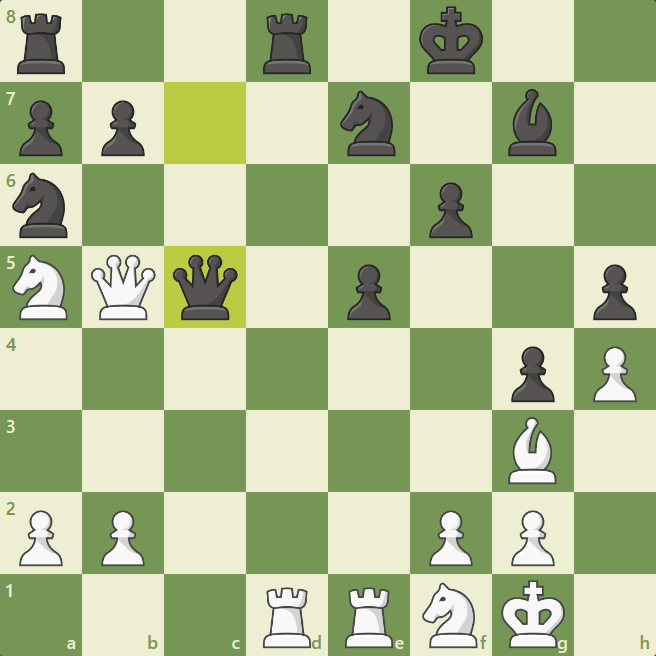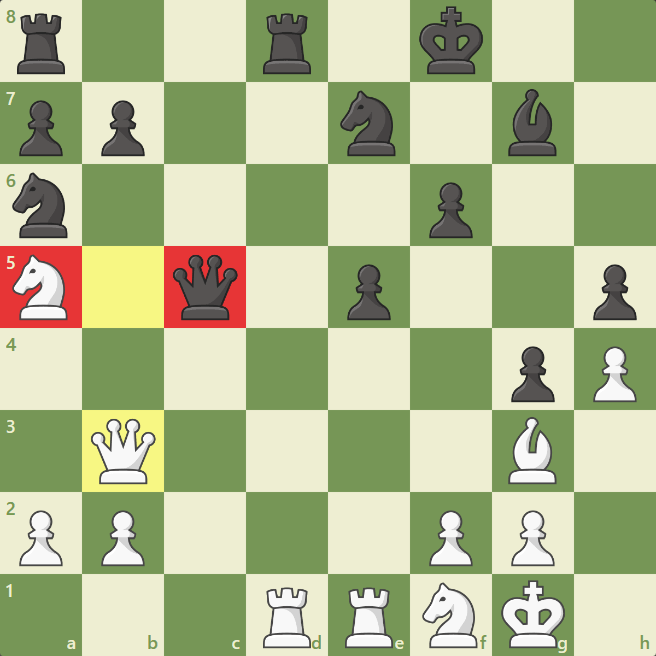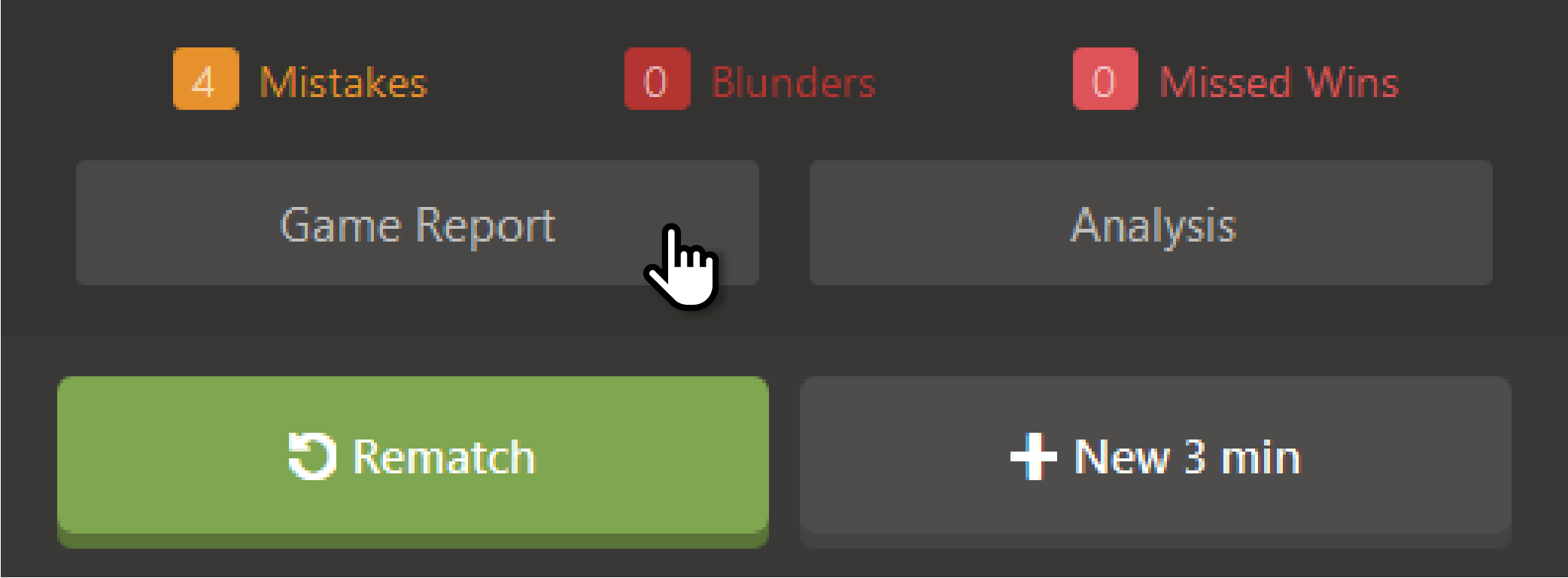
Blunder
Losing in chess is never fun. It inevitably happens, though, and many times a blunder is the reason for a loss. Here is what you need to know about a blunder in chess.
- What Is A Blunder In Chess?
- Why Are Blunders Important?
- How To Reduce Your Blunders Using Chess.com
- Test Your Skills
- Conclusion
What Is A Blunder In Chess?
In chess, a blunder happens when a player makes a move that negatively affects their position in a significant way. In many cases, a blunder can cause a player to lose material or be checkmated, but it can also lead to a strategically lost position. Failing to take advantage of an opponent's mistake is also sometimes described as a blunder.
In the image below, we can see an example of a startling blunder played by GM Gata Kamsky in a game against GM Alexei Shirov, who moved his queen to Qc5 and proposed an exchange.

Kamsky did not want to exchange queens, so he moved his lady back to b3. However, he missed the fact that his knight was left unprotected—an enormous blunder. He resigned before Shirov captured his knight.

It is important to notice that the term blunder is used to indicate a bad move that gives an opponent a great advantage. For this reason, the stronger the player, the more likely they are to identify smaller inaccuracies as blunders since they can also find ways to exploit them.
Why Are Blunders Important?
Chess can be a ruthless game. Even if a person is playing with perfection and dominating their opponent, a single blunder can turn a game around.
Avoiding these errors is an essential step to win more games, and it is a main difference between beginners and more advanced players. Unfortunately, though, no one is blunder-proof. Even professional chess players make game-losing moves from time to time.
In this game between former world champion GM Tigran Petrosian and GM David Bronstein, the Iron Tiger blundered his queen away. Bronstein took this opportunity to win significant material and take home the victory.

Miscalculating a combination is another common way to blunder. In this encounter between IM Jaime Santos Latasa and GM Francisco Vallejo Pons, White greatly overestimated his attack and sacrificed his rook. His plan involved letting Santos capture his piece to create a mating attack. However, his calculation was not precise, and he made a move that would hang his rook for nothing.
Incredibly, Vallejo's blunder was not the only miscalculation. Because Santos also missed the defensive moves that would have allowed him to win the game, he resigned.
Lastly, you can see the most devastating effect a blunder can have. In the rematch for the World Championship of 1892, Mikhail Chigorin was challenging Wilhelm Steinitz for the title. In this game, the great Chigorin played a terrible move that allowed his opponent to checkmate him almost instantly.
How To Reduce Your Blunders Using Chess.com
One of the best ways to reduce the number of blunders you play is to analyze your games, identify your bad moves, and learn from your own mistakes. But how can you see where you went wrong? After all, if you played the move, it is because you thought it was a good one.
It turns out that finding your blunders is very easy using Chess.com's analysis tool. Just click the Game Report button after you finish a game.

After a few seconds, our engine will analyze your game and give you a report with all your blunders. You can then click the Key Moments button and try to play more precise moves than the ones you did during the game.

You can also check for blunders in any of your previous games. Head over to your completed games archive, choose the game you want to examine and click the Analyze button.

Test Your Skills
Now that you know what a blunder is, it is time for you to test your skills. Can you detect your opponent's errors and use them to create a significant advantage for yourself?
Puzzle 1: Even former world champions sometimes make terrible mistakes. GM Boris Spassky was playing as White against GM Anatoly Karpov, who played Re6 and proposed an exchange. Spassky did not want to exchange rooks, so he moved his rook to g4. Can you exploit Spassky's blunder?
Puzzle 2: In another game played by two strong grandmasters, Alexander Morozevich and Boris Gelfand, Black made a seemingly innocent move: Rd6. Do you see why that is a poor choice?
Puzzle 3: Super GMs also have bad days. In this game, GM Vladimir Kramnik punished GM Wang Hao after he made a blunder. Can you see how Kramnik could win material in this position?
Conclusion
You now know what a blunder in chess is, how to identify one, and how to avoid making one by using Chess.com's tools. Now head over to our Lessons page to learn powerful tactics that let you explore your opponents' blunders and win more games!









